Best Zoom Lenses for Sony E-Mount (Full-Frame & APS-C)
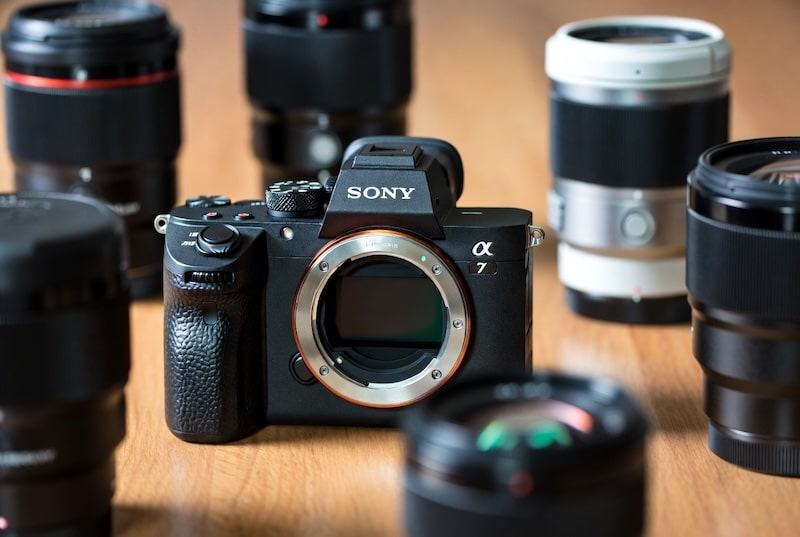
Before You Buy: How to Choose a Zoom Lens for Sony E-Mount
Sony E-mount is almost too rich in lens options. You’ve got Sony’s own G and G Master lenses, plus fantastic third-party zooms from Tamron and Sigma that often save money without giving up much quality.
To keep things simple, think about four main questions before you pick a lens:
- What do you shoot most?
- Travel / family / everyday: Standard zooms like 20-70mm, 24-70mm or 24-105mm.
- Landscapes / vlogging / interiors: Ultra-wide zooms like 16-35mm or 16-28mm.
- Sports / wildlife / portraits: Telephoto zooms like 70-200mm, 70-180mm, 100-400mm or 200-600mm.
- Do you need a fast aperture (f/2.8), or is f/4 fine?
- f/2.8 zooms are better for low light and subject separation, but they’re heavier and more expensive.
- f/4 zooms are lighter, cheaper, and perfectly fine for travel, landscape and general use.
- How much weight are you willing to carry?
Wildlife and pro zooms can be heavy. If you’re hiking or traveling with kids, 300–600g difference really matters. - What’s your budget?
Sony G Master glass is amazing, but Tamron and Sigma often deliver 80–90% of that performance for much less.
This guide focuses mainly on full-frame E-mount, but everything works on APS-C too (you just get a tighter field of view due to the crop).
1. Workhorse Standard Zooms (Everyday / Events / Weddings)
These are your “always on the camera” lenses. If you don’t know where to start, start here.
Sony FE 24-70mm f/2.8 GM II – The Pro All-Rounder
Sony’s 24-70mm f/2.8 GM II is basically the “safe bet” standard zoom for serious shooters. It’s lighter and smaller than the original GM, with noticeably improved sharpness and autofocus. Reviews consistently call it one of the most feature-rich and optically impressive standard zooms available for E-mount.

Why people love it (good points):
- Extremely sharp across the frame, even wide open at f/2.8
- Fast, reliable autofocus – excellent for both stills and video
- Lighter and smaller than the original GM, so nicer for long days
- Great build and weather sealing; feels very “pro”
- Extra controls (aperture ring, custom buttons) make it a joy for advanced users
Where it’s not perfect (bad points):
- Very expensive – this is not a casual purchase
- Overkill if you mostly shoot travel at f/5.6–f/8 and don’t really need f/2.8
- Heavier than f/4 zooms, especially noticeable if you’re used to small primes
Best for:
Wedding photographers, event shooters, serious hybrids (photo + video), and anyone who wants the absolute “no compromise” standard zoom.
Sigma 24-70mm f/2.8 DG DN II Art – High-End Quality at a Lower Price
The second-generation Sigma 24-70mm f/2.8 DG DN II Art is a huge value lens. It’s lighter than the previous version, adds better autofocus and more features, and often comes in at around half the price of Sony’s GM II while offering comparable performance.
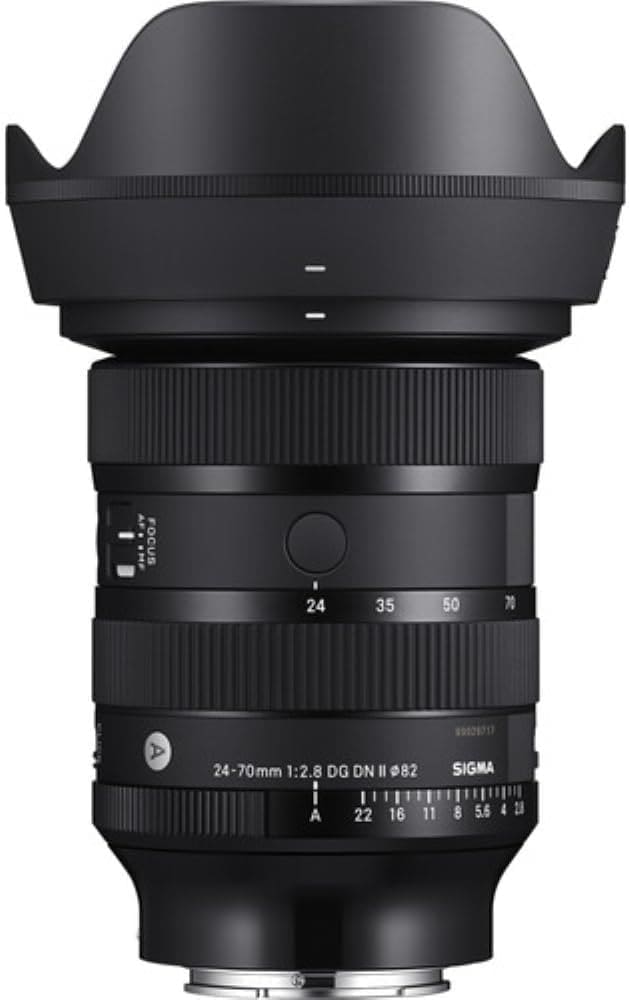
Good points:
- Excellent sharpness and overall image quality for the price
- Autofocus is fast and accurate, suitable for real-world pro use
- Slightly smaller and lighter than the previous Sigma version, making it nicer for everyday carry
- Very attractive price-to-performance ratio – a real sweet spot
Bad points:
- More distortion and vignetting wide open compared to some rivals (software correction fixes much of it, but it’s there)
- Corner sharpness, while good, still lags a bit behind the very best lenses in this class
Best for:
People who want near-GM image quality at a noticeably lower price. Great for weddings, portraits, travel and general work.
Tamron 28-75mm f/2.8 Di III VXD G2 – The Lightweight, Real-World Hero
Tamron’s 28-75mm f/2.8 G2 is a classic for Sony shooters. It offers a bright f/2.8 aperture, a super usable focal range and very good optical performance in a compact, light body. It’s a popular choice for travel and everyday shooting because it doesn’t feel like a brick on the front of your camera.

Good points:
- Light and compact for a constant f/2.8 zoom (about 540g)
- Very good sharpness for the price and size, especially in the center
- Close focusing at the wide end gives almost “mini macro” capability
- Faster, quieter autofocus compared to the original 28-75, thanks to the VXD motor
- Great bang for buck if you want f/2.8 but need to stay under pro-GM prices
Bad points:
- Starts at 28mm, not 24mm – you do miss a bit of width for landscapes or tight spaces
- No optical image stabilization (you rely on the camera’s IBIS, which is fine on newer bodies)
- Slightly more distortion and softness in the extreme corners than the top-tier Sony GM
Best for:
Travelers, hybrid shooters, and anyone wanting a lighter, more affordable f/2.8 standard zoom.
Sony FE 20-70mm f/4 G – The Ultimate Travel Zoom Range
Sony’s 20-70mm f/4 G is a clever lens. It gives you extra width at 20mm, which is amazing for travel, interior shots, vlogging and landscapes, while still reaching a very useful 70mm. Image quality is strong across the zoom range, especially toward the longer end.

Good points:
- 20mm at the wide end is a big deal; you often don’t need a separate ultra-wide on trips
- Very good sharpness and contrast, especially from mid to long range
- Compact, nicely built, with weather sealing and good handling
- Close-focus and decent magnification make it surprisingly handy for detail shots
Bad points:
- Constant f/4 means you don’t get the same background blur or low-light flexibility as an f/2.8 lens
- Pricier than some third-party zooms with similar or slightly faster apertures
- Corners can be a bit weaker at the extreme wide end before software correction
Best for:
Travel, city walks, architecture, casual video and anyone who wants “one lens to do almost everything” without going super heavy.
Sigma 28-70mm f/2.8 DG DN Contemporary – Tiny f/2.8 Zoom for Everyday Carry
Sigma’s 28-70mm f/2.8 DG DN Contemporary is basically the “shrink-wrapped” f/2.8 standard zoom. It’s small and light, yet still delivers nice image quality. If your priority is keeping your kit as compact as possible, this one is worth a look.

Good points:
- Very compact and lightweight for a constant f/2.8 zoom
- Good central sharpness across most of the range
- Fast, quiet autofocus; solid for stills and video
- Very reasonably priced compared to big f/2.8 zooms
Bad points:
- Starts at 28mm, not 24mm – again, you lose a bit of wide-angle flexibility
- Corners at 28mm and the long end are weaker wide open; you’ll want to stop down for best performance
- No in-lens stabilization (you rely fully on IBIS)
Best for:
Everyday shooters who want a small, light f/2.8 zoom that still gives professional-looking results without breaking the bank.
2. Travel & “Do-It-All” Zooms
If you want to carry one lens on a trip and don’t want to keep swapping glass, these are the “lazy but smart” options.
Sony FE 24-105mm f/4 G OSS – The Classic One-Lens Travel Solution
This lens is a modern classic for Sony full-frame users. 24-105mm is an incredibly practical range for travel, street, portraits and even some light telephoto work. It’s sharp, well built, stabilized and very versatile.
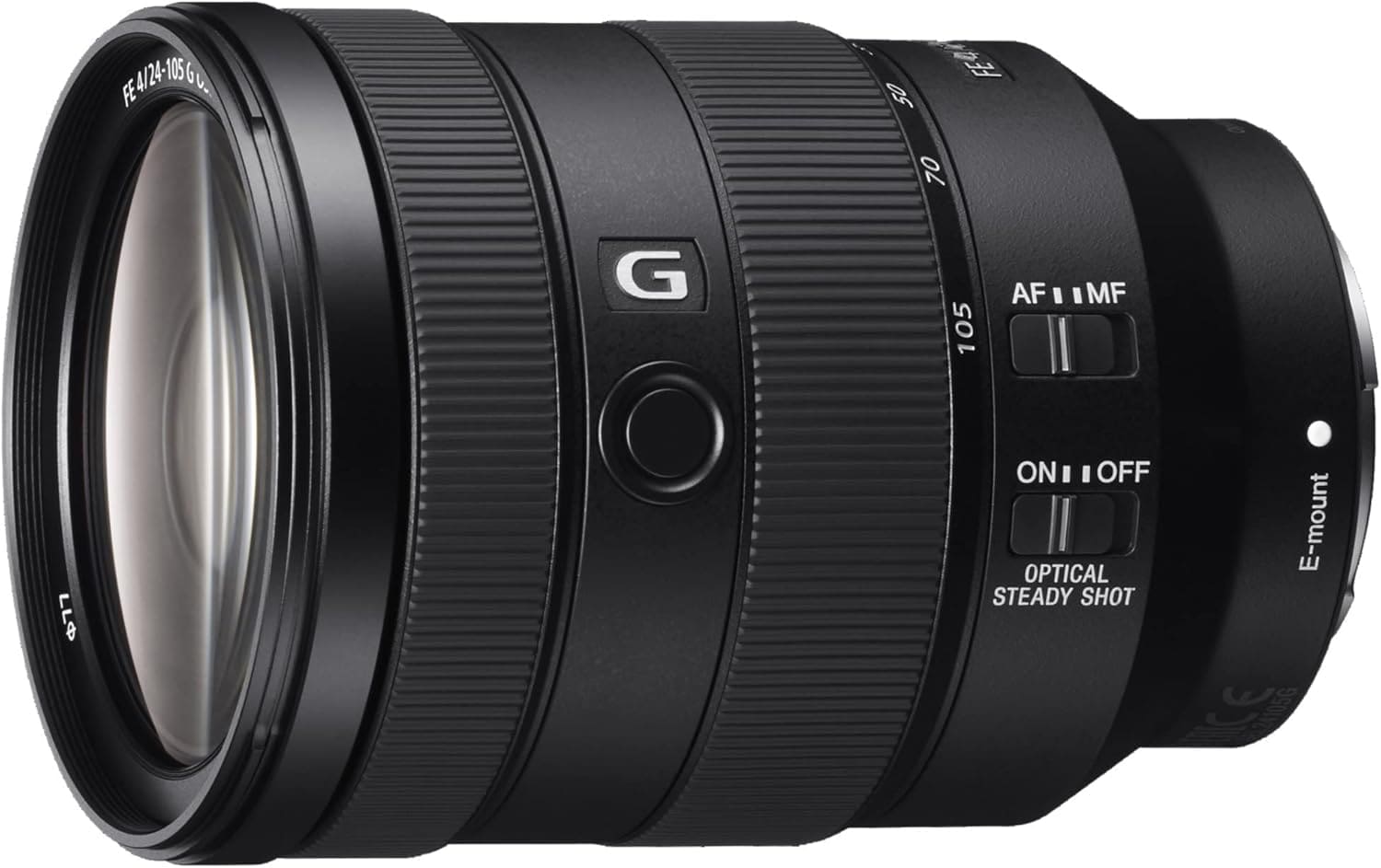
Good points:
- Very good sharpness across most of the range; a strong “all-rounder”
- Built-in Optical SteadyShot (OSS) helps for handheld low-light shooting and video
- Quick, quiet autofocus that works well for both stills and video
- Solid build with weather resistance – good for travel abuse
Bad points:
- f/4 may feel limiting indoors or at night compared to f/2.8 zooms
- Bigger and heavier than simpler travel zooms like 28-200mm superzooms
- Not as “creamy” in the background blur as a fast prime or f/2.8 zoom
Best for:
People who want a reliable, single-lens travel kit with stabilized, high-quality images and don’t mind f/4.
Tamron 28-200mm f/2.8-5.6 Di III RXD – The Superzoom That’s Actually Good
Tamron’s 28-200mm for Sony E-mount is a rare thing: an all-in-one superzoom that’s actually sharp and usable across much of its range. It’s light, covers almost everything from wide to strong telephoto, and even starts at f/2.8 on the wide end.
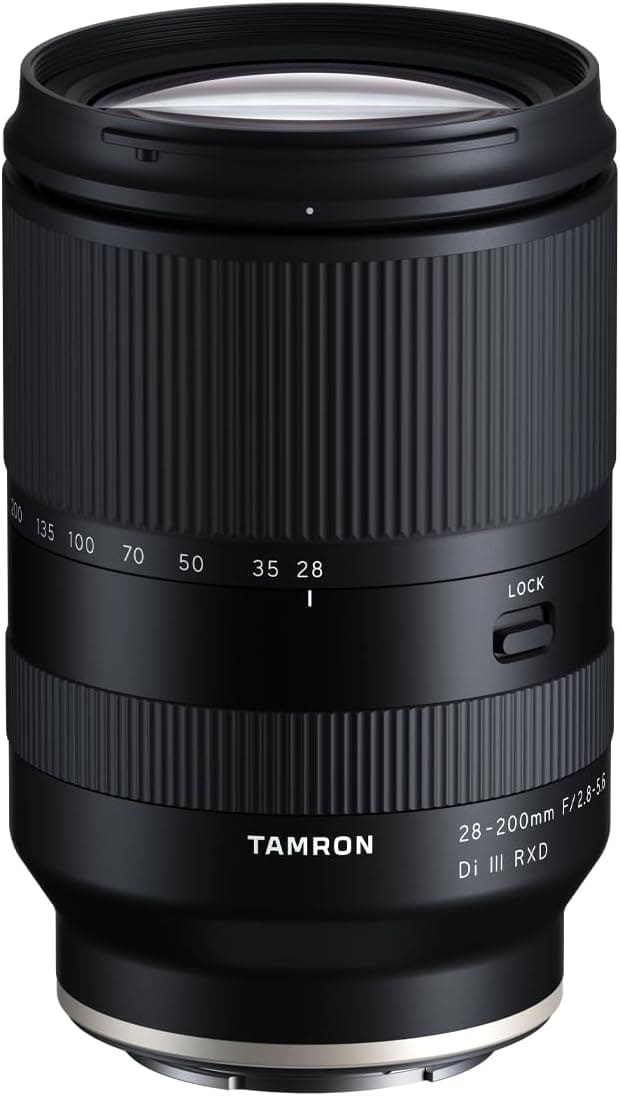
Good points:
- Huge 28-200mm range covers most travel situations – landscapes, portraits, details, even some wildlife
- Starts at f/2.8 at 28mm, great for low light and shallow depth-of-field at the wide end
- Compact and lightweight for such a long zoom; ideal for hiking and travel
- Very strong price-to-performance – one of the best “fun/travel” lenses on Sony
Bad points:
- Softness and distortion are more noticeable at the extreme ends compared to more specialized zooms
- No in-lens stabilization – relies entirely on the camera’s IBIS
- 28mm might not be wide enough if you love big, sweeping landscapes or tight interiors
Best for:
Travelers who want one lens in the bag and don’t want to think about switching lenses at all.
Tamron 25-200mm f/2.8-5.6 Di III VXD G2 – Next-Gen All-In-One Travel Zoom
Tamron’s 25-200mm f/2.8-5.6 Di III VXD G2 is the updated version of the popular 28-200mm. It keeps the same compact, travel-friendly idea but widens the short end to 25mm and upgrades the autofocus and optics. In simple terms, it’s Tamron’s “do everything” lens, but a bit smarter and more refined.
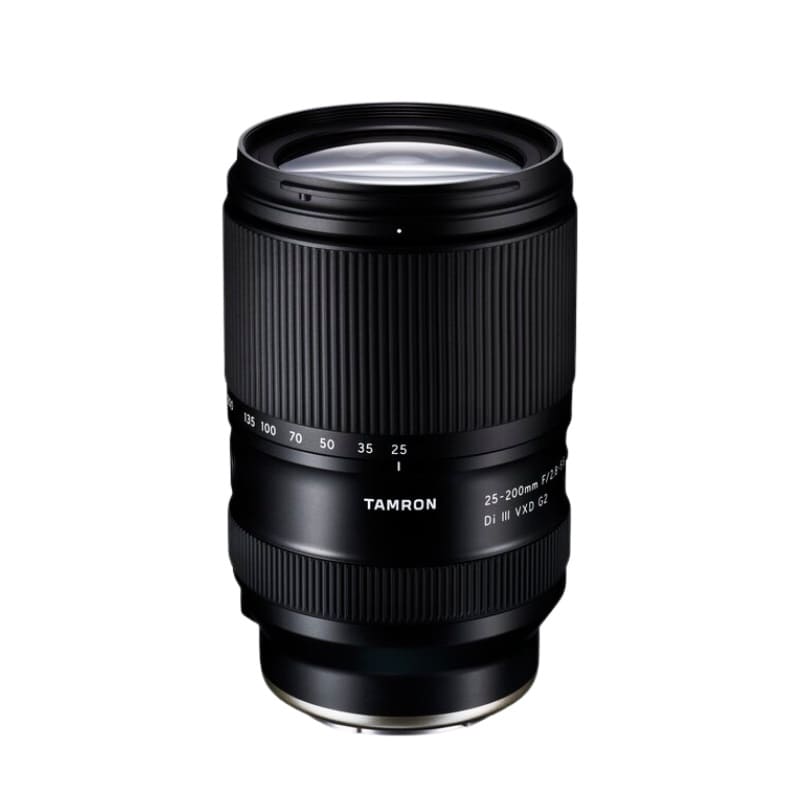
Good points:
- Wider 25mm starting point gives you a noticeably broader view than 28mm, which is great for tight streets, interiors and landscapes
- Still reaches all the way to 200mm, so you can zoom from wide scenes to tight details with one lens
- Uses Tamron’s VXD linear motor, so autofocus is faster, quieter and more confident for both photos and video
- Improved optical design compared to the older 28-200mm, with better overall sharpness and contrast
- Very good close-up performance with half-macro style magnification at the wide end, so you can fill the frame with small subjects without carrying a separate macro lens
Bad points:
- As a superzoom, you still get more distortion and softness at the extreme ends than with shorter, more specialized zooms
- The maximum aperture narrows to f/5.6 on the long end, so it’s not a low-light monster at 200mm
- Slightly more expensive than the older 28-200mm, so you have to decide if the upgrades are worth it for your use
Best for:
Travelers and everyday shooters who want the latest all-in-one Tamron travel zoom, with a bit more width, better AF and nicer close-up ability than the original 28-200mm.
Tamron 35-150mm f/2-2.8 Di III VXD – The Event & Travel Monster
This lens is kind of crazy: 35-150mm with an aperture that starts at f/2 and gradually moves to f/2.8. It’s like having a set of fast primes built into one zoom. It’s bigger and heavier, but many event shooters swear by it because they can cover wide environmental shots and tight portraits without changing lenses.
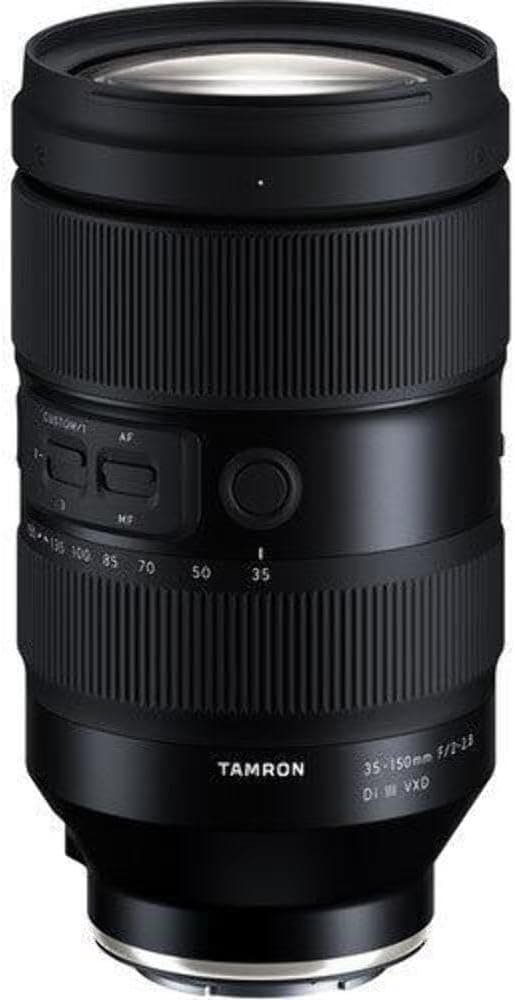
Good points:
- Super flexible focal range: 35mm to 150mm covers environmental portraits, mid-tele and classic tight portraits
- Very fast aperture (f/2 at the wide end) is fantastic for low light and subject isolation
- Strong autofocus performance that keeps up with real events
- High build quality; feels truly professional
Bad points:
- Heavy and relatively large – you definitely feel it after a long day
- No optical stabilization; again, you rely on camera IBIS
- Not cheap, though still often less than buying multiple fast primes
Best for:
Weddings, events, travel where you don’t mind extra weight in exchange for massive flexibility and beautiful bokeh.
3. Ultra-Wide Zooms (Landscape, Architecture, Vlogging)
If you love big skies, tight interiors or dramatic perspective, you’ll want an ultra-wide zoom.
Sony FE 16-35mm f/2.8 GM II – The High-End Ultra-Wide
The second-generation 16-35mm GM is lighter, sharper and more refined than the original. It’s a favorite for landscape and architectural shooters who want excellent sharpness, beautiful sunstars and strong autofocus performance.
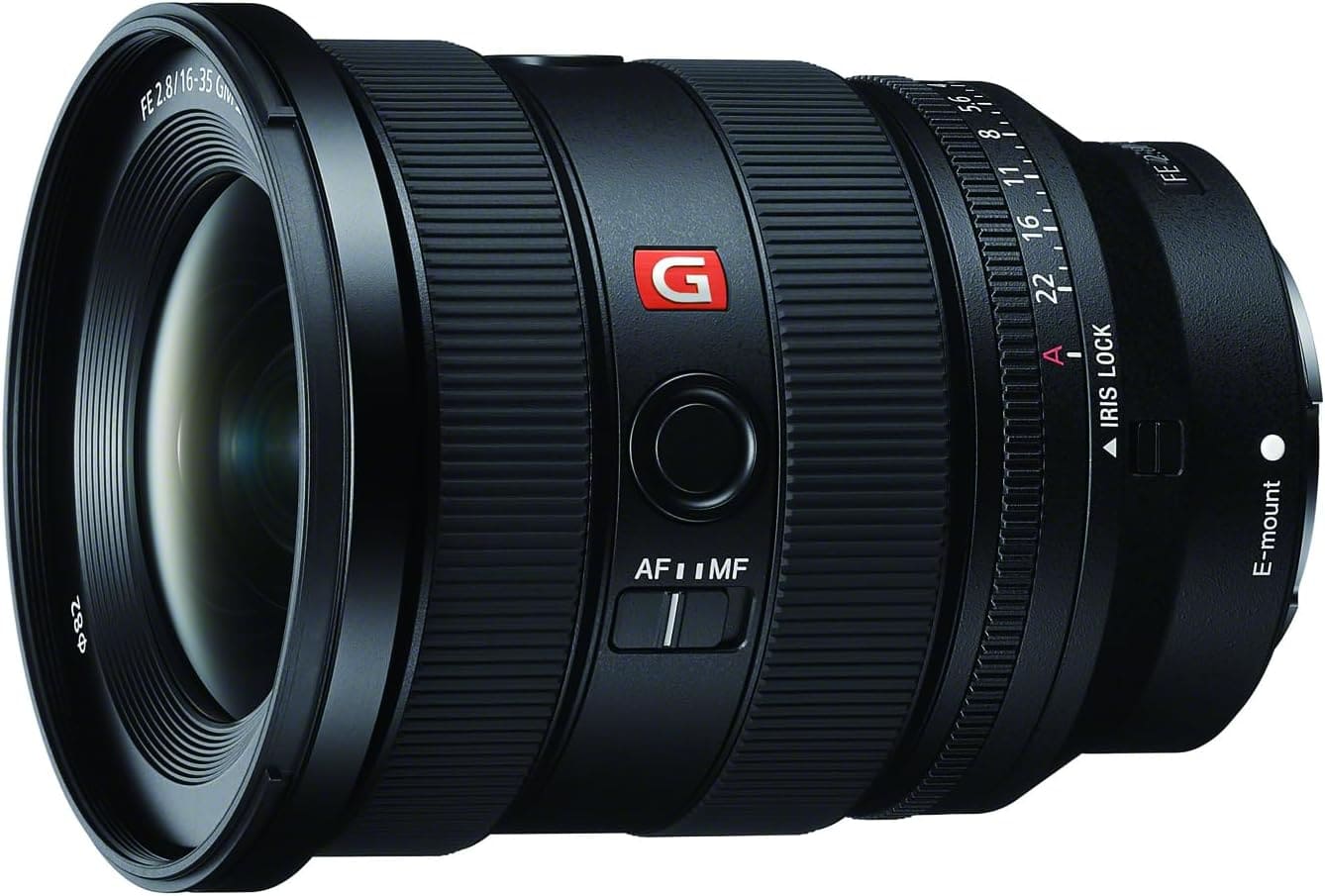
Good points:
- Very sharp across the frame, even wide open; excellent for high-resolution sensors
- Lighter and more compact than the original GM; easier to hike with
- Fantastic autofocus performance and low focus breathing; great for video
- Lovely sunstar rendering for backlit landscapes
Bad points:
- Very expensive – this is a serious investment
- Some vignetting and distortion when used without software corrections (common for this class)
Best for:
Serious landscape, architecture and astro shooters who want the best Sony native ultra-wide and don’t mind the price.
Sigma 16-28mm f/2.8 DG DN Contemporary – Wide, Fast and Travel-Friendly
Sigma’s 16-28mm f/2.8 DG DN Contemporary hits a sweet spot: wide enough for dramatic shots, f/2.8 for low light, and still relatively compact and affordable. It’s become a very popular wide-angle travel lens.
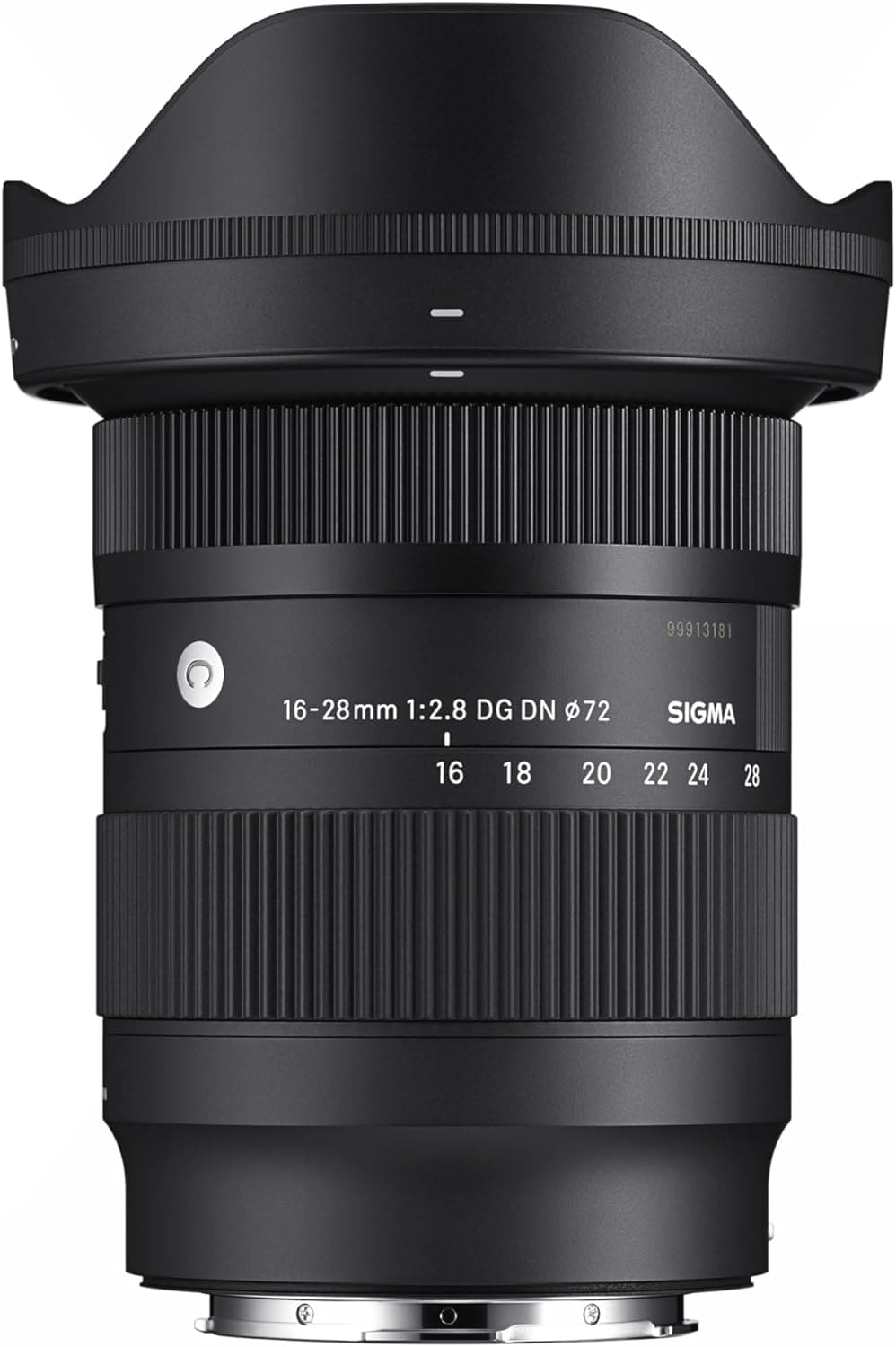
Good points:
- Very good sharpness across the frame, even at f/2.8
- Internal zoom design – balance doesn’t shift, which is great for gimbals
- Weather-sealed, solid build, yet still travel-friendly in size
- More affordable than high-end G Master options
Bad points:
- Tops out at 28mm – you’ll still want a standard zoom or prime to cover the mid-range
- Some vignetting and corner softness wide open at 16mm, though it improves stopped down
Best for:
Travel, vlogging, architecture, interiors – especially for shooters who want f/2.8 but don’t want GM-level prices.
Tamron 17-28mm f/2.8 Di III RXD – Lightweight Wide-Angle Companion
The Tamron 17-28mm f/2.8 is a long-time favorite among Sony shooters. It’s very light, weather-sealed and offers excellent value for money, with good sharpness and strong AF.
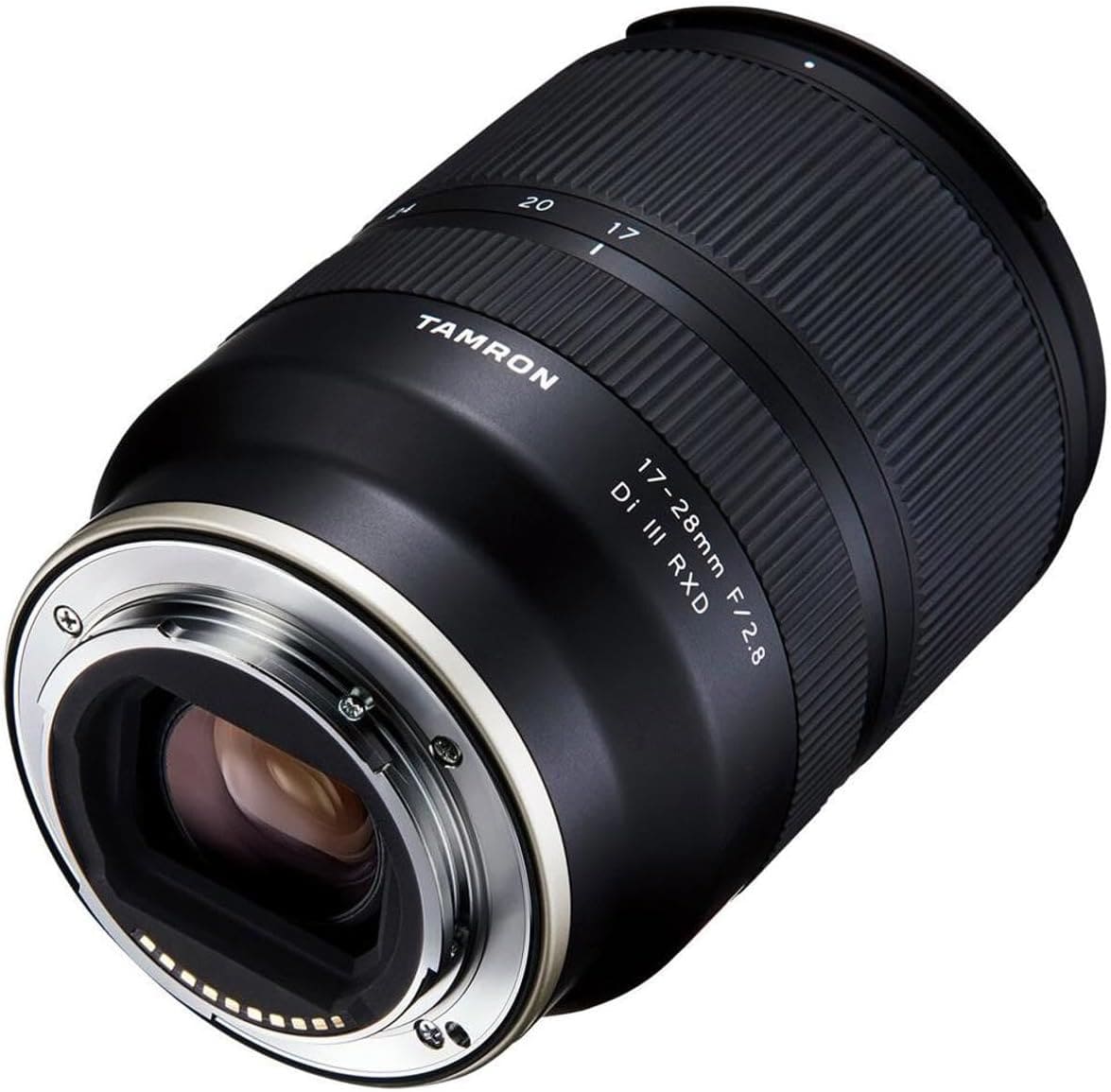
Good points:
- Very light and compact; perfect for hiking and travel
- Constant f/2.8 aperture for low light and astro work
- Overall solid optical performance with good flare resistance
- Usually priced very competitively
Bad points:
- Doesn’t go as wide as 16mm; that 1mm difference is noticeable for ultra-wide addicts
- Distortion (especially at 17mm) and vignetting are stronger in raw but mostly corrected in-camera
- Range stops at 28mm – again, you need another lens to cover the normal range
Best for:
Travel and landscape shooters who want a light, affordable f/2.8 wide zoom and don’t mind pairing it with another standard zoom.
4. Telephoto Zooms (Sports, Wildlife, Portrait Compression)
These lenses give you reach, background compression and that classic telephoto look.
Sony FE 70-200mm f/2.8 GM OSS II – The Gold Standard Telephoto Zoom
This lens is widely regarded as one of the best 70-200mm f/2.8 lenses on any system. It’s lighter than the original, sharper, and has excellent autofocus performance and features.
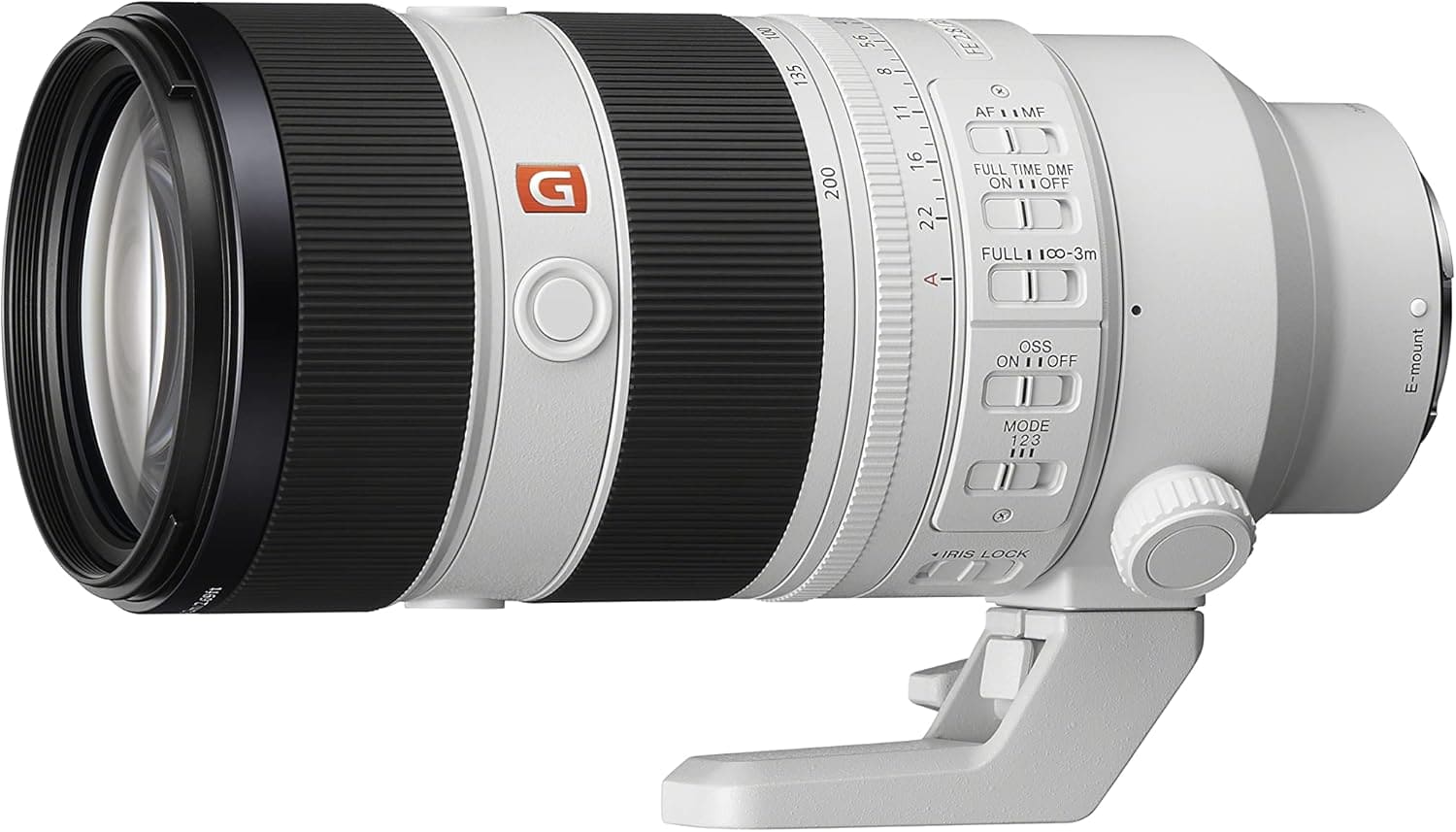
Good points:
- Outstanding sharpness and contrast across the zoom range
- Very fast, accurate autofocus – perfect for sports, wildlife and fast action
- Lighter than many competing 70-200mm f/2.8s; more comfortable for long shoots
- Great video performance with minimal focus breathing
Bad points:
- Extremely expensive – firmly in the “pro investment” category
- Still not exactly “tiny”; if you’re used to small primes it will feel big
- Overkill if you only occasionally shoot telephoto stuff
Best for:
Professional sports, wildlife, weddings and events, or anyone who wants a top-tier telephoto zoom without compromise.
Sony FE 70-200mm f/4 Macro G OSS II – Lighter, More Flexible Telephoto
If you want reach and quality but don’t need f/2.8, this lens is a fantastic compromise. It’s smaller and lighter, has excellent image quality, and adds 0.5x macro capability across the entire range, plus teleconverter support up to 400mm.
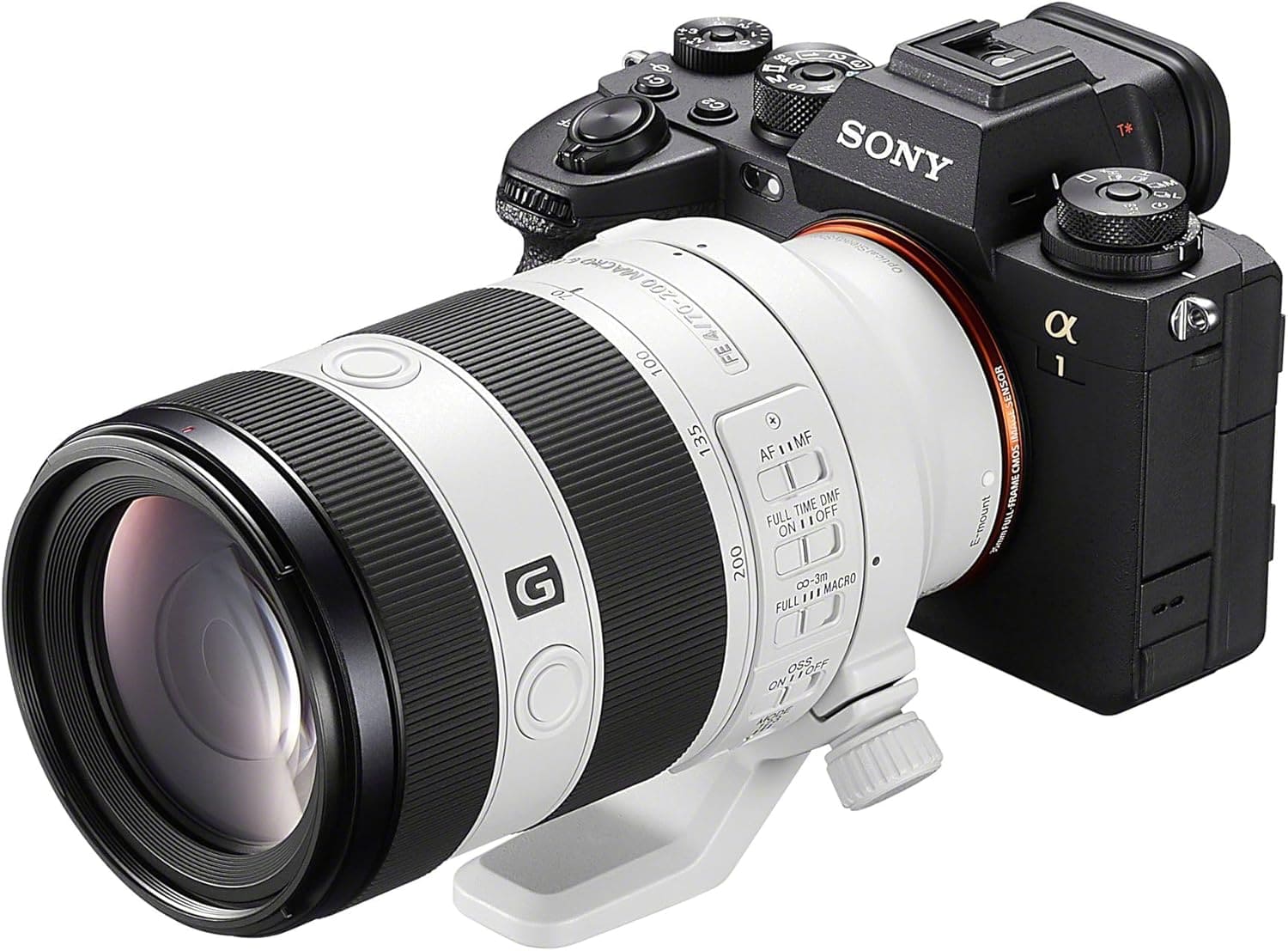
Good points:
- Excellent sharpness with strong performance in center and edges
- 0.5x macro at all focal lengths – surprisingly useful for details, products and nature close-ups
- Works with teleconverters for up to 1:1 macro and 400mm reach
- Much lighter and more compact than the 70-200mm f/2.8 GM II
Bad points:
- f/4 is one stop slower than f/2.8; not ideal for very low light indoor sports or super shallow DOF
- Extending zoom design (not internal) – some people prefer the solid feel of internal zoom
Best for:
Travel, outdoor sports, portrait work and nature photography where you want a high-quality telephoto that won’t destroy your back.
Tamron 70-180mm f/2.8 Di III VC VXD G2 – The Budget-Friendly Fast Telephoto
The 70-180mm f/2.8 G2 offers most of what people want from a 70-200 f/2.8, in a smaller, lighter and considerably cheaper package. The G2 version adds optical stabilization and improved image quality over the original.
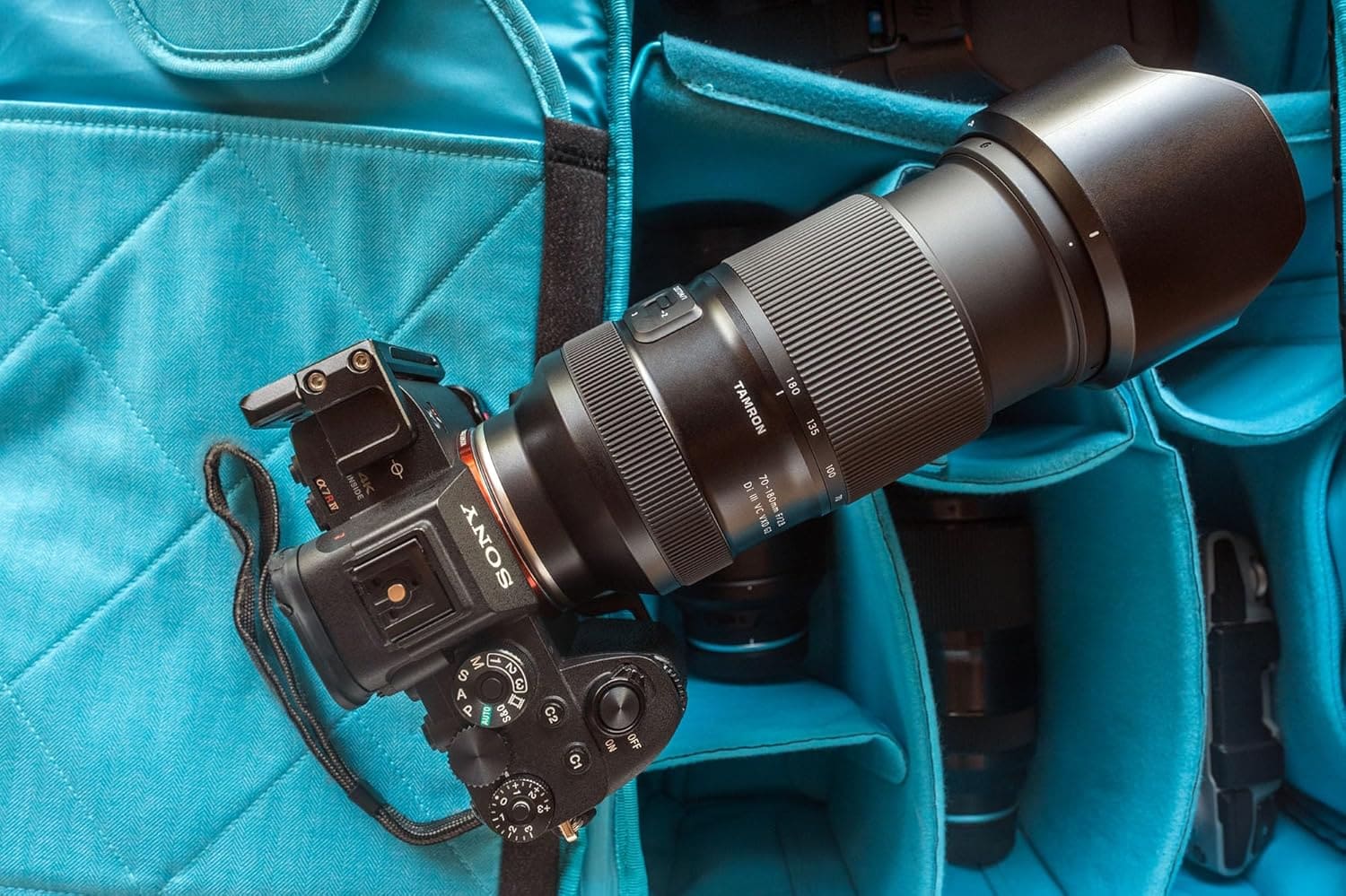
Good points:
- Very good sharpness, especially in the center and mid-frame
- Lighter and more compact than most 70-200mm f/2.8 lenses
- Now includes optical stabilization in the G2 version, making handheld shooting easier
- Much cheaper than Sony’s 70-200mm f/2.8 GM II while still delivering very good real-world results
Bad points:
- “Only” goes to 180mm, not 200mm – for most people that’s fine, but it’s a spec difference
- Not compatible with teleconverters
- Background blur and rendering are very good, but still a small step behind the GM II’s overall refinement
Best for:
Portrait, weddings, sports and general telephoto work when you want f/2.8 speed without paying pro-GM money.
Sony FE 200-600mm f/5.6-6.3 G OSS – Wildlife & Bird Photography Workhorse
If you’re into wildlife, birds or distant sports, this lens is a beast in the best way. It gives you serious reach (200-600mm) with very good sharpness and internal zoom, so the lens doesn’t extend as you zoom in.

Good points:
- Excellent sharpness and contrast through most of the zoom range; still strong at 600mm
- Internal zoom keeps balance consistent, great for gimbals or long handheld sessions
- Very effective autofocus and stabilization for moving subjects
- For what it offers, the price/performance ratio is excellent
Bad points:
- Heavy and large; realistically you’ll often want a monopod or at least strong arms
- f/5.6-6.3 is not bright; you’ll need good light or higher ISO
- Not the subtle lens you use in quiet indoor events or tight spaces
Best for:
Birders, wildlife shooters and outdoor sports fans who want serious reach with strong image quality.
Sigma 100-400mm f/5-6.3 DG DN OS Contemporary – Budget Long Reach
Sigma’s 100-400mm DG DN OS is a more affordable way to get to 400mm on full-frame. It’s well built, stabilized, and delivers good sharpness in the useful parts of the frame.
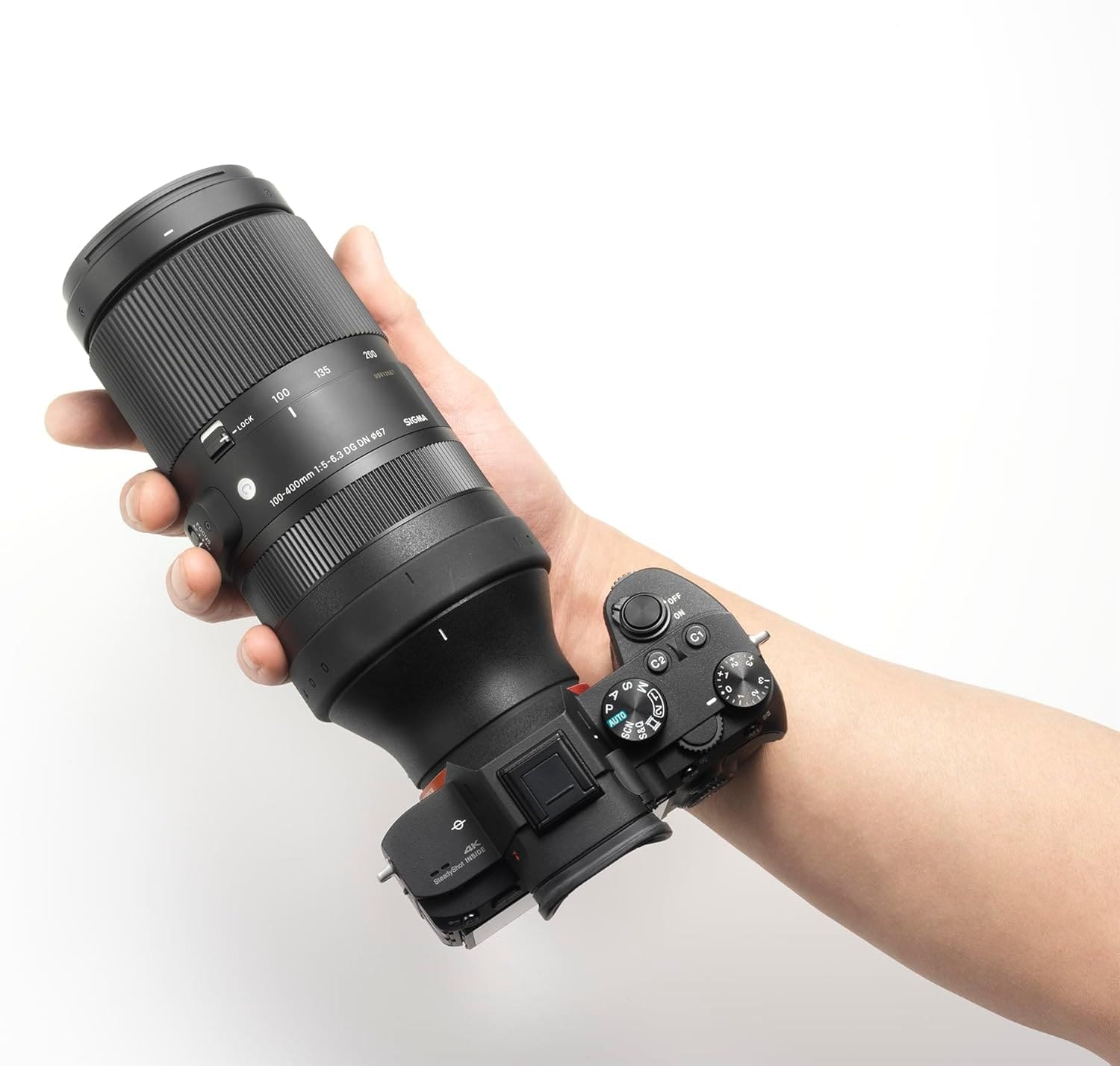
Good points:
- Good sharpness through most of the zoom range, especially on your subject
- Built-in optical stabilization helps for handheld shooting at long focal lengths
- More affordable than many 100-400mm or 70-200mm options
- Solid build and weather resistance suitable for outdoor work
Bad points:
- Corners and edges are softer than center, especially wide open and at the long end
- Slower aperture (f/5-6.3) limits low-light action
- Extending zoom can feel less balanced than internal zoom designs like Sony’s 200-600
Best for:
Wildlife, outdoor sports and general telephoto shooting on a more modest budget, especially if 400mm is plenty for you.
5. So… Which Zoom Lens Should You Actually Buy?
Let’s break it down by real-world situations so you’re not overwhelmed.
Best Overall Standard Zoom (Money No Object)
Pick: Sony FE 24-70mm f/2.8 GM II
If you want the safest, most versatile, high-end zoom for Sony E-mount, this is it. You can shoot weddings, travel, portraits, products and even video with it and rarely feel limited. It’s expensive, but it’s the lens you buy once and keep for years.
Best Value Standard Zoom (Great Quality, Lower Price)
Pick: Sigma 24-70mm f/2.8 DG DN II Art or Tamron 28-75mm f/2.8 G2
- Choose Sigma 24-70mm II if you want the classic 24-70 range, great AF and near-GM quality at a much lower price.
- Choose Tamron 28-75mm G2 if you value compact size and price a bit more, and you’re okay starting at 28mm.
Both are excellent “real-world” choices that most people will be very happy with.
Best Zoom for Pure Travel (One Lens, Light Bag)
If you want a single lens for holidays, city trips, and family outings:
- Best balance of quality + range + stabilization:
Sony 24-105mm f/4 G OSS – stabilized, sharp, very flexible range. - Best “true superzoom” travel lenses:
Tamron 25-200mm f/2.8-5.6 Di III VXD G2 – the newer, wider, more advanced all-in-one option that starts at 25mm and gives you upgraded AF and close-up ability.
Tamron 28-200mm f/2.8-5.6 Di III RXD – still a fantastic choice if you want to save a bit of money and don’t mind starting at 28mm. - Best wide-biased travel lens if you love landscapes and cityscapes:
Sony 20-70mm f/4 G – ultra useful 20mm wide, still reaches 70mm for portraits.
Best Budget Telephoto Zoom for Portraits & Events
Pick: Tamron 70-180mm f/2.8 Di III VC VXD G2
You get f/2.8, good sharpness, lighter weight and a much lower price than Sony’s 70-200 GM II. For portraits, weddings and most sports in decent light, this lens is more than enough.
Best Telephoto Zoom for Professionals
Pick: Sony 70-200mm f/2.8 GM OSS II
If your income depends on getting the shot, this is the safest bet. The AF, optics and handling are extremely polished. Pair it with a 24-70mm f/2.8 GM II and you have the classic two-zoom pro kit.
If you prefer something lighter and don’t absolutely need f/2.8, the Sony 70-200mm f/4 Macro G OSS II is the smarter pick – especially if you love macro detail shots or want teleconverter compatibility.
Best Zoom for Wildlife and Birds
Pick: Sony 200-600mm f/5.6-6.3 G OSS
If wildlife or birding is your thing, this lens is the obvious choice in the Sony system: long reach, strong image quality, internal zoom and solid price for what it delivers.
On a tighter budget or if 400mm is enough, Sigma 100-400mm DG DN OS is a nice alternative.
Best Ultra-Wide Zoom for Landscapes & Architecture
- Money-no-object:
Sony 16-35mm f/2.8 GM II – stunning sharpness, great build and sunstars. - Best value wide zoom:
Sigma 16-28mm f/2.8 DG DN Contemporary – wide, sharp, compact and relatively affordable. - Best lightweight wide zoom for travel:
Tamron 17-28mm f/2.8 Di III RXD – very light, f/2.8, strong value.
If You Shoot a Bit of Everything and Want a Two-Lens Zoom Kit
A really practical combination for a Sony full-frame shooter could be:
- Option A (high-end pro):
- Sony 16-35mm f/2.8 GM II
- Sony 70-200mm f/2.8 GM II
- Option B (balanced & more affordable):
- Tamron 17-28mm f/2.8
- Tamron 70-180mm f/2.8 G2
- Option C (travel-centric):
- Sony 20-70mm f/4 G
- Sony 70-200mm f/4 Macro G OSS II
Each combo covers wide to telephoto with minimal gaps and keeps your lens swapping simple.
Final Thoughts
Sony E-mount is in a very lucky place right now: you have fantastic native lenses from Sony and equally impressive options from Tamron and Sigma that often cost less and weigh less, while still giving you professional-grade results.
The nice thing now is that Tamron’s travel lineup has both:
- The original 28-200mm f/2.8-5.6, which is still a killer value
- The newer 25-200mm f/2.8-5.6 G2, which is wider, smarter and more refined, and is likely to become many people’s go-to “leave it on the camera” lens for trips
If you want to keep your life simple:
- Pick one great standard zoom (24-70 GM II / Sigma 24-70 II / Tamron 28-75 G2)
- Add one telephoto (Tamron 70-180 G2 or Sony 70-200 GM II)
- Or grab a single travel zoom (Tamron 25-200, Tamron 28-200, Sony 24-105 or Sony 20-70) and just enjoy shooting.